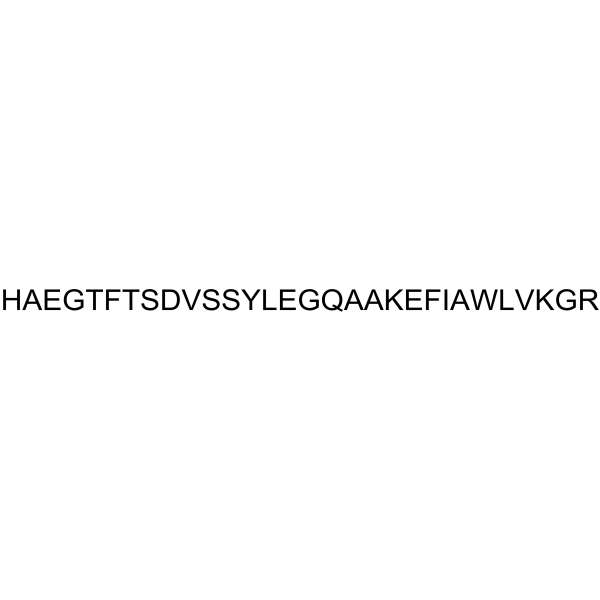| Description |
Beinaglutide is a recombinant human GLP-1 (rhGLP-1) that shares almost 100% homology with human GLP-1 (7–36). Beinaglutide displays does-dependent effects in glycemic control, inhibiting food intake and gastric empty and promoting weight loss. Beinaglutide has the potential for the research of overweight/obesity and nonalcoholic steatohepatitis (NASH)[1][2].
|
| Related Catalog |
|
| In Vitro |
Beinaglutide (100 nM; 48 h) increases the expression of phosphorylation of Akt in the adipocytes that were potentiated insulin-stimulated[2]. Western Blot Analysis[2] Cell Line: 3T3L-1 cells Concentration: 100 nM Incubation Time: 48 h Result: Increased the phosphorylation of Akt in the adipocytes that were potentiated insulin-stimulated.
|
| In Vivo |
Beinaglutide (0.6, 1.2, 2.4 mg/kg; s.c.; three times per day for 7 consecutive days) shows the ability of glycemic contro, inhibits food intake and weight loss in mouse[1]. Beinaglutide (150 µg/kg; s.c.; daily for 6 weeks) increases insulin sensitivity of adipocytes[2]. Animal Model: Wild-type male C57BL/6 mice and Male Lepob/Lepob (ob/ob) mice (ob/ob-NASH mouse model was induced by GAN diet)[1] Dosage: 0.6, 1.2, 2.4 mg/kg Administration: S.c.; three times per day for 7 consecutive days Result: Significantly reduced blood glucose with dosedependence in C57BL/6 and ob/ob mice, dose dependently inhibits food intake and gastric Emptying, and significantly reduced body weight, food intake with dose-dependence. Animal Model: Eight-week-old male C57BL/6 mice[2] Dosage: 150 µg/kg Administration: S.c.; daily for 6 weeks Result: Showed improved glucose tolerance and insulin sensitivity, decreased adipose tissue weight and adipocyte size and potentiated insulin sensitivity of adipocytes.
|
| References |
[1]. Fang X, et al. Beinaglutide shows significantly beneficial effects in diabetes/obesity-induced nonalcoholic steatohepatitis in ob/ob mouse model. Life Sci. 2021 Apr 1;270:118966. [2]. Zhang F, et al. Recombinant human GLP-1 beinaglutide regulates lipid metabolism of adipose tissues in diet-induced obese mice. iScience. 2021 Oct 30;24(12):103382.
|
